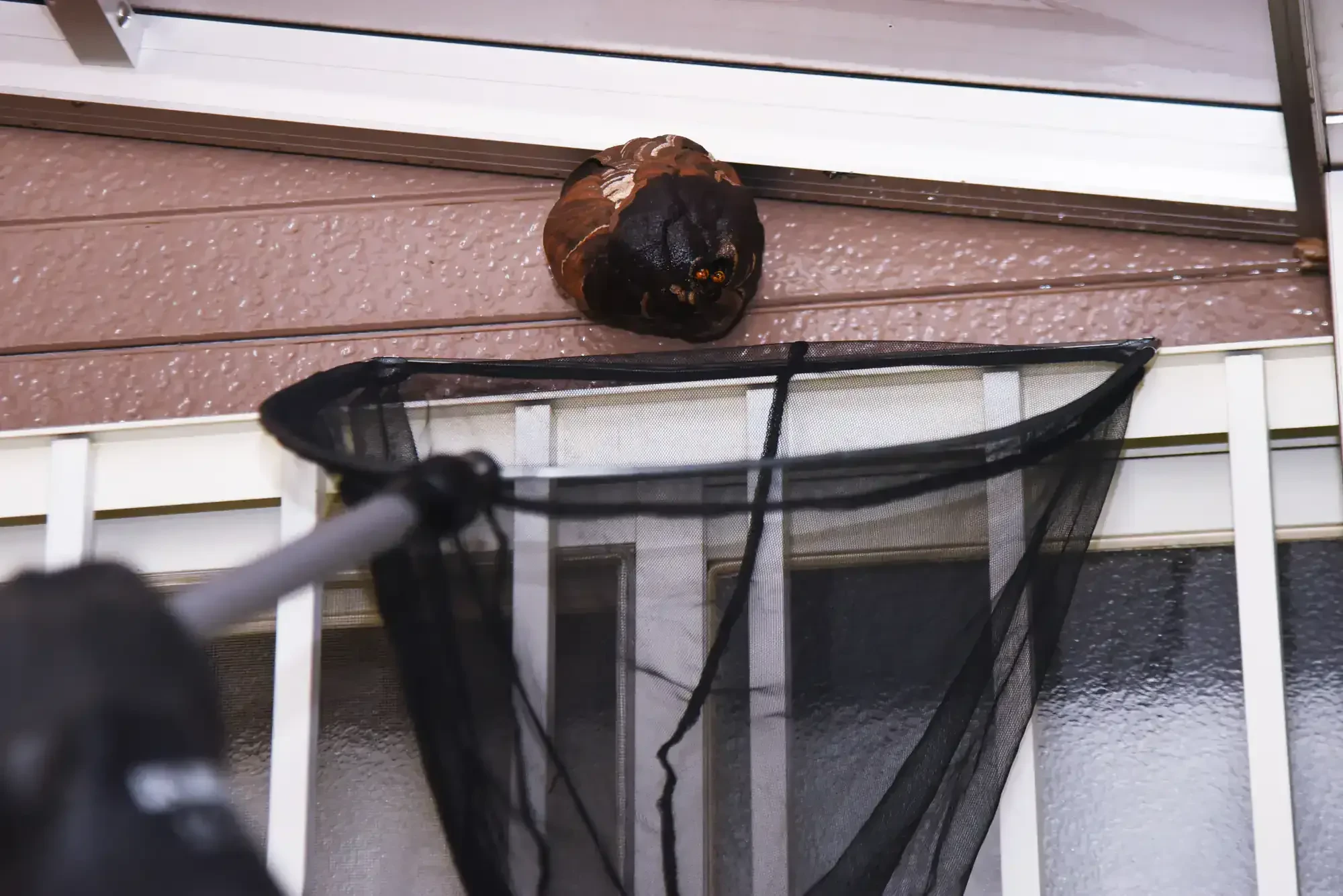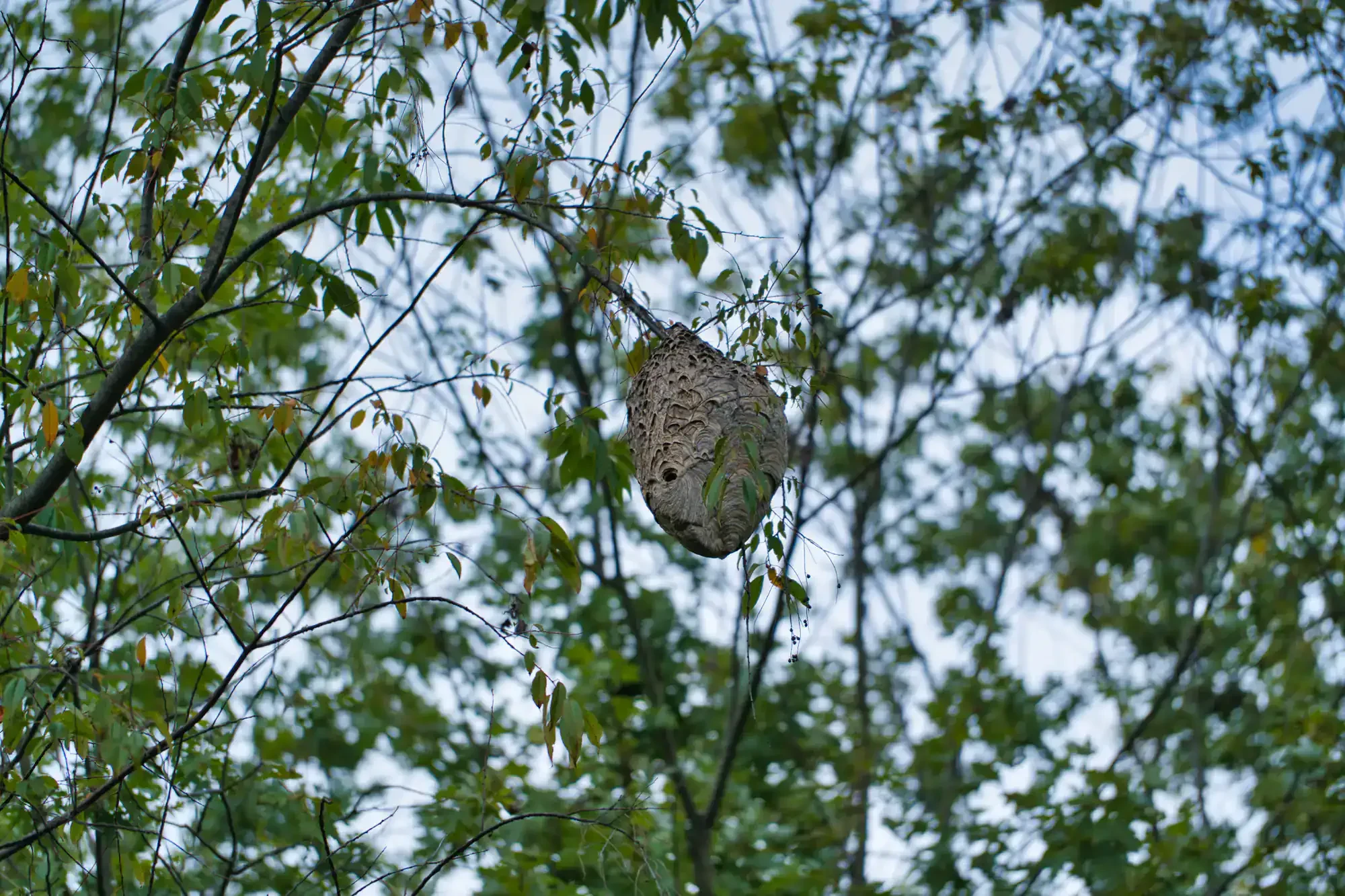
Hear from Our Customers

You’ll actually want to use your deck again. No more scanning the ground before every step, no more rushing kids inside when they’re playing. No more yellow jackets dive-bombing your barbecue or turning your outdoor space into a danger zone.
The difference is immediate. Within days of professional treatment, those aggressive wasps that were terrorizing your property are gone. Your family can enjoy summer evenings outside again without fear. Your pets can roam the yard safely.
Most importantly, you’ll sleep better knowing that hidden nest in your wall isn’t growing into a colony of thousands, ready to break through your drywall or swarm anyone who gets too close.
We’ve been eliminating yellow jacket threats in Lake Fenton since 2005. Roger brings 26 years of hands-on experience to every job, understanding exactly how these aggressive wasps behave in Michigan’s climate and terrain.
This isn’t a side business or seasonal work for us. We’ve built our reputation on solving the yellow jacket problems that other companies struggle with—those hidden wall nests, underground colonies, and high-risk locations that require real expertise to handle safely.
Lake Fenton residents know the unique challenges of living near water. Yellow jackets thrive in the area’s mix of wooded lots and open spaces, often building massive colonies before homeowners even realize there’s a problem.

First, we locate the nest. This sounds simple, but it’s often the hardest part. Yellow jackets build in wall voids, underground chambers, and hidden structural spaces. Roger uses flight pattern observation and professional detection methods to pinpoint the exact location.
Next comes the treatment itself, always done at night when the colony is inside and less active. Using specialized protective equipment and professional-grade materials, we treat the nest directly—not just the entrance. This ensures complete elimination of the colony.
The final step is prevention. We identify what attracted the yellow jackets in the first place and seal potential nesting sites to prevent future infestations. You get specific recommendations for keeping your property less attractive to scouting queens next spring.

Ready to get started?
Complete nest elimination, not just surface spraying. Many DIY approaches only kill the workers you can see, leaving the queen and developing larvae to rebuild the colony. Professional treatment targets the entire nest structure.
Lake Fenton’s unique geography creates perfect yellow jacket habitat. The area’s combination of wooded properties, proximity to water, and suburban development gives these wasps plenty of nesting options and food sources. They’re particularly problematic near the lake’s recreational areas where families gather.
Michigan’s late summer weather patterns make August and September peak season for yellow jacket aggression. Colonies reach maximum size—often 3,000 to 5,000 individuals—just as natural food sources become scarce. This forces them to scavenge around homes, creating dangerous encounters with residents.

Yellow jackets are significantly more dangerous than most other stinging insects. Unlike honey bees that can only sting once, yellow jackets can sting repeatedly without losing their stinger. Their venom is also more potent than many other wasps.
The real danger comes from their aggressive defensive behavior. When their nest is threatened, they release alarm pheromones that signal other colony members to attack. This can result in dozens or even hundreds of stings in a matter of minutes.
For people with allergies, even a single yellow jacket sting can trigger life-threatening anaphylactic shock. Emergency rooms see over 500,000 stinging insect injuries annually, with yellow jackets responsible for a significant portion of severe reactions.
Yellow jackets are opportunistic nesters that take advantage of Lake Fenton’s diverse property features. Underground nests are extremely common, often built in abandoned rodent burrows, under decks, or in landscaped areas where the soil has been disturbed.
Wall voids are another favorite location. They’ll enter through small gaps around pipes, electrical outlets, or siding joints, then build massive paper nests inside your walls. These are particularly dangerous because the colony can grow undetected until wasps start appearing inside your home.
Around Lake Fenton specifically, they also nest in boat houses, under docks, in tree cavities near the water, and in the eaves of lakefront structures. The area’s mature trees and proximity to water create ideal conditions for multiple species of yellow jackets.
Late summer aggression is driven by biology and food scarcity. By August and September, yellow jacket colonies reach their peak size—sometimes 5,000 individuals in a single nest. At the same time, their natural food sources like caterpillars and flies become harder to find.
This forces worker yellow jackets to scavenge for sugary foods and proteins around human activity. Lake Fenton’s outdoor recreation season coincides perfectly with this scavenging behavior, bringing aggressive wasps into direct contact with families enjoying lakefront activities.
The colony is also preparing for winter by producing new queens. Workers become extremely protective during this critical time, attacking perceived threats much more readily than earlier in the season. Even vibrations from lawn mowing or walking near a nest can trigger defensive swarming.
Professional treatment typically shows results within 24-48 hours, with complete elimination occurring within 3-4 days. The timeline depends on nest size, location, and weather conditions, but you should see a dramatic reduction in yellow jacket activity almost immediately.
Night treatments are most effective because the entire colony is inside the nest. Professional-grade insecticides are designed to be carried throughout the nest by returning workers, ensuring even hidden chambers are treated. This is much more thorough than store-bought sprays that only affect wasps on contact.
For wall nests or other structural infestations, complete elimination may take slightly longer as the treatment needs to penetrate the entire nest structure. However, dangerous swarming behavior typically stops within the first day as the colony’s defensive capability is quickly compromised.
Yes, wall-dwelling yellow jacket colonies can cause significant structural damage if left untreated. The wasps chew through drywall, insulation, and even wood to expand their nest space. Large colonies can create cavities several feet across within wall structures.
The immediate danger is yellow jackets breaking through interior walls into living spaces. This creates an extremely hazardous situation where aggressive wasps suddenly appear inside your home with no escape route, often resulting in multiple family members being stung.
Property damage extends beyond just the nest cavity. Moisture from the nest can cause mold growth, staining, and wood rot. Dead wasps and nest debris can attract other pests and create ongoing odor problems. Professional removal prevents this escalating damage while safely eliminating the colony.
Yellow jackets are more aggressive and dangerous than paper wasps or mud daubers commonly found in Michigan. They’re social wasps that live in large colonies and defend their territory aggressively, unlike solitary wasp species that rarely sting unless directly handled.
Physically, yellow jackets have bright yellow and black stripes with hairless bodies and defined waists. They’re faster fliers than most other wasps and have a distinctive side-to-side flight pattern before landing. Their nests are made of gray paper-like material, either aerial or underground.
Behaviorally, yellow jackets are scavengers that actively seek human food sources, making them much more likely to create dangerous encounters. Other Michigan wasps like paper wasps are less aggressive and typically only sting when their small, umbrella-shaped nests are directly disturbed.